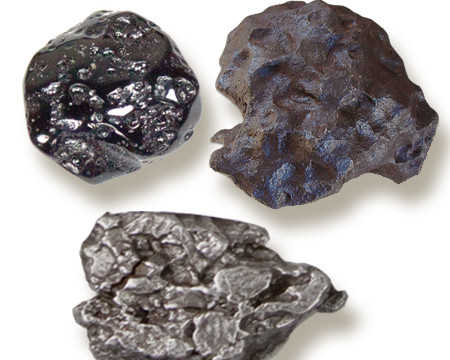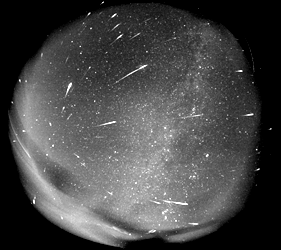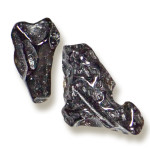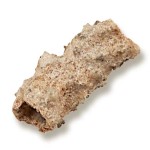Product Description
FOUND AROUND THE WORLD.
A meteorite is a solid piece of debris, from such sources as asteroids or comets, that originates in outer space and survives its impact with the Earth’s surface. It is called a meteoroid before its impact. A meteorite’s size can range from small to extremely large. When a meteoroid enters the atmosphere, friction, pressure, and chemical interactions with the atmospheric gases cause it to heat up and radiate that energy, thus forming a fireball, also known as a meteor or shooting/falling star. The term bolide refers to either an extraterrestrial body that collides with the Earth, or to an exceptionally bright, fireball-like meteor regardless of whether it ultimately impacts the surface.
More generally, a meteorite on the surface of any celestial body is a natural object that has come from somewhere in space. Meteorites have been found on the Moon and Mars. Meteorites that are recovered after being observed as they transit the atmosphere or impact the Earth are called meteorite fall. All other meteorites are known as finds. As of February 2010, there are approximately 1,086 witnessed falls having specimens in the world’s collections. In contrast, there are more than 38,660 well-documented meteorite finds.
Meteorites have traditionally been divided into three broad categories: stony meteorites are rocks, mainly composed of silicate minerals; iron meteorites that are largely composed of metallic iron-nickel; and, stony-iron meteorites that contain large amounts of both metallic and rocky material. Modern classification schemes divide meteorites into groups according to their structure, chemical and isotopic composition and mineralogy. Meteorites smaller than 2mm are classified as micrometeorites.
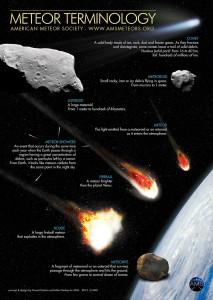 Download Poster (PDF = 18.3mb)
Download Poster (PDF = 18.3mb)
METEOR SHOWERS
A brief period of heightened meteor activity, often occurring regularly in a particular part of the sky at a particular time of year. Meteor showers are generally named after the constellation in which they appear to originate; thus the Perseids appear to originate in the constellation Perseus and the Leonids in the constellation Leo. The showers occur when the Earth passes through a region having a greater than usual concentration of interplanetary debris, such as particles left by a disintegrating comet, at certain points in its orbit. Although the meteors enter the Earth’s atmosphere on parallel trajectories, perspective makes it appear as if they originate from the same point in the sky, known as the radiant.
A meteor shower is a celestial event in which a number of meteors are observed to radiate from one point in the night sky. These meteors are caused by streams of cosmic debris called meteoroids entering Earth’s atmosphere at extremely high speeds on parallel trajectories. Most meteors are smaller than a grain of sand, so almost all of them disintegrate and never hit the Earth’s surface. Intense or unusual meteor showers are known as meteor outbursts and meteor storms, which may produce greater than 1,000 meteors an hour.
Any other solar system body with a reasonably transparent atmosphere can also have meteor showers. For instance, Mars is known to have meteor showers, although these are different from the ones seen on Earth because the different orbits of Mars and Earth intersect orbits of comets in different ways.

